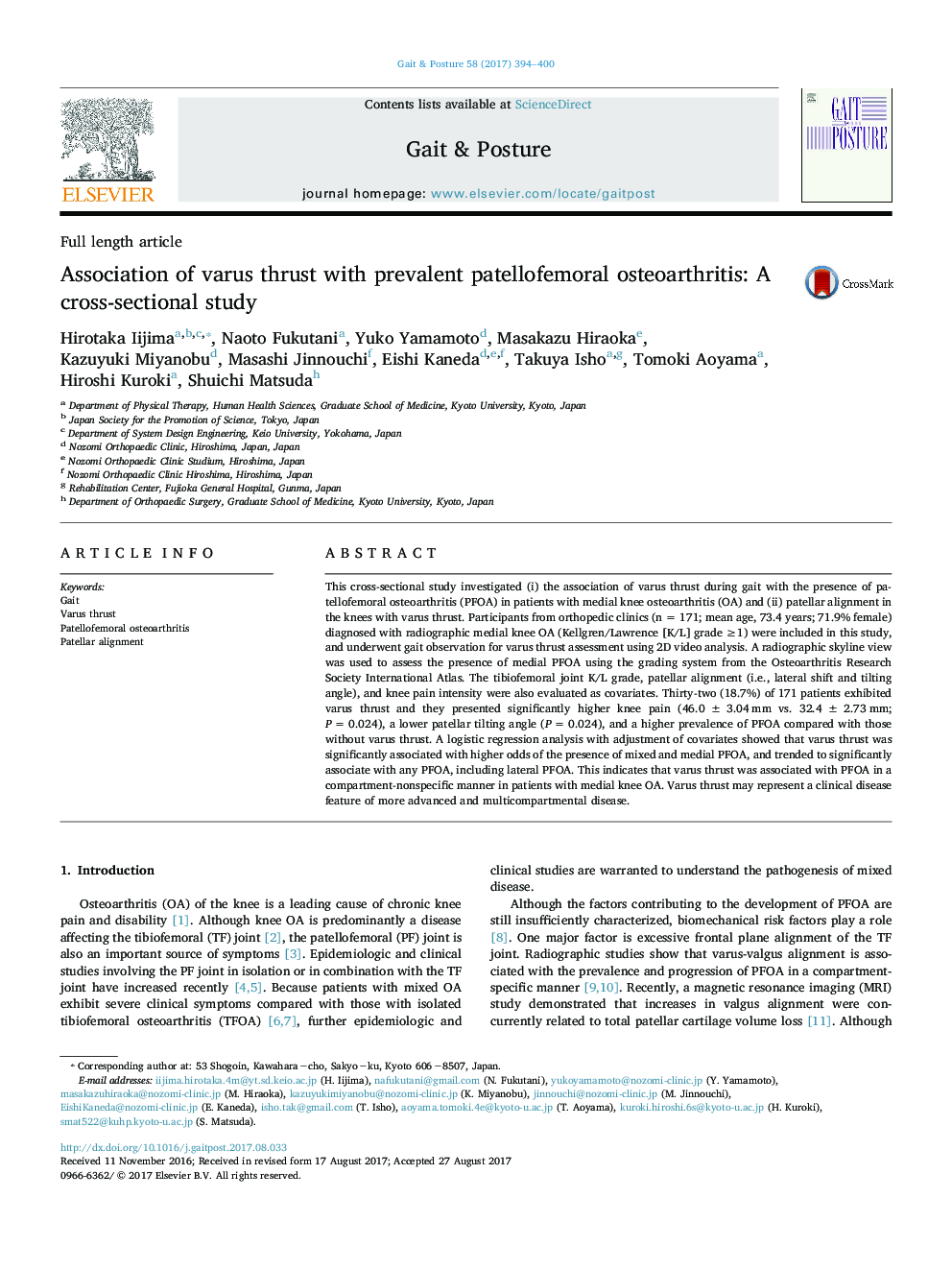| Article ID | Journal | Published Year | Pages | File Type |
|---|---|---|---|---|
| 5707643 | Gait & Posture | 2017 | 7 Pages |
Abstract
This cross-sectional study investigated (i) the association of varus thrust during gait with the presence of patellofemoral osteoarthritis (PFOA) in patients with medial knee osteoarthritis (OA) and (ii) patellar alignment in the knees with varus thrust. Participants from orthopedic clinics (n = 171; mean age, 73.4 years; 71.9% female) diagnosed with radiographic medial knee OA (Kellgren/Lawrence [K/L] grade â¥1) were included in this study, and underwent gait observation for varus thrust assessment using 2D video analysis. A radiographic skyline view was used to assess the presence of medial PFOA using the grading system from the Osteoarthritis Research Society International Atlas. The tibiofemoral joint K/L grade, patellar alignment (i.e., lateral shift and tilting angle), and knee pain intensity were also evaluated as covariates. Thirty-two (18.7%) of 171 patients exhibited varus thrust and they presented significantly higher knee pain (46.0 ± 3.04 mm vs. 32.4 ± 2.73 mm; P = 0.024), a lower patellar tilting angle (P = 0.024), and a higher prevalence of PFOA compared with those without varus thrust. A logistic regression analysis with adjustment of covariates showed that varus thrust was significantly associated with higher odds of the presence of mixed and medial PFOA, and trended to significantly associate with any PFOA, including lateral PFOA. This indicates that varus thrust was associated with PFOA in a compartment-nonspecific manner in patients with medial knee OA. Varus thrust may represent a clinical disease feature of more advanced and multicompartmental disease.
Related Topics
Health Sciences
Medicine and Dentistry
Orthopedics, Sports Medicine and Rehabilitation
Authors
Hirotaka Iijima, Naoto Fukutani, Yuko Yamamoto, Masakazu Hiraoka, Kazuyuki Miyanobu, Masashi Jinnouchi, Eishi Kaneda, Takuya Isho, Tomoki Aoyama, Hiroshi Kuroki, Shuichi Matsuda,
